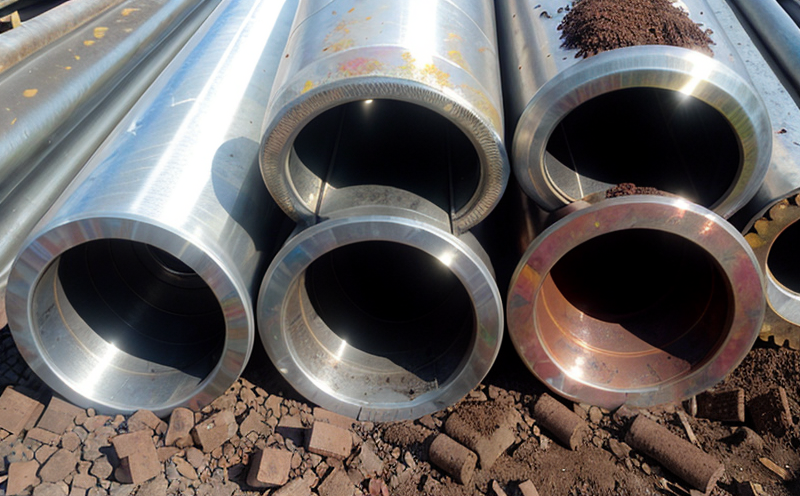ISO 8124-3 Nickel Release from Toy Components
The ISO 8124 series of standards provides a comprehensive framework for ensuring the safety of toys and other similar products intended for children. The third part, Part 3: Mechanical strength and durability of parts to which a child may be exposed—Nickel release, is particularly relevant when dealing with materials that could potentially pose a health risk due to nickel release.
This standard aims to prevent harmful exposure to nickel from the toy components by ensuring that any nickel present in non-ferrous metals used does not exceed safe limits. Nickel, being one of the most common allergens, can cause allergic reactions such as dermatitis when released into the environment through wear and tear or normal use.
The testing process involves immersion of toy parts containing non-ferrous metals into an aqueous solution designed to simulate conditions where nickel may be released. The extracted nickel is then analyzed using atomic absorption spectrophotometry (AAS). Compliance with this standard ensures that toys are safe for children and meet regulatory requirements set by various jurisdictions around the world.
The scope of testing under ISO 8124-3 includes all toy components made from non-ferrous metals, especially those parts that come into direct contact with a child. This encompasses items like wheels, gears, buttons, and other small parts that might be manipulated by the user.
To perform this test accurately, it is crucial to follow strict specimen preparation guidelines outlined in the standard. Specimens should be cut from larger components where possible, ensuring they are representative of the entire part. Any surface treatments or coatings must also be considered during sample preparation since these can affect nickel release rates.
The equipment required for this test includes an AAS instrument capable of detecting low concentrations of nickel as well as a suitable aqueous solution used for extraction purposes. Laboratories specializing in toy testing typically have all necessary apparatus at hand, making them ideal partners for conducting such tests.
Once the samples have been prepared according to ISO 8124-3 requirements, they undergo immersion in the specified solution for a predetermined period. After this time has elapsed, the solution is filtered and analyzed using AAS techniques. Results are expressed as milligrams per liter (mg/L), which allows comparison against established limits.
Compliance with ISO 8124-3 demonstrates a commitment to child safety and regulatory compliance. By adhering to these stringent standards, manufacturers can ensure their products remain free from harmful elements like nickel while still maintaining quality design features required by market demands.
Quality and Reliability Assurance
Adhering to ISO 8124-3 not only guarantees compliance with international regulations but also enhances overall product reliability. Reliable products build trust among consumers, especially parents who are concerned about their children’s well-being.
By incorporating rigorous testing protocols into the manufacturing process, companies can identify potential issues early on and address them proactively. This proactive approach helps eliminate costly recalls later down the line while maintaining brand reputation.
Furthermore, consistent adherence to these standards fosters a culture of excellence within organizations by encouraging continuous improvement practices. Employees become more adept at identifying risks associated with specific materials or processes, leading to better decision-making throughout every stage of production.
The commitment to quality extends beyond just nickel release testing; it encompasses all aspects of toy manufacturing—from raw material selection through final assembly. Ensuring each step adheres to industry best practices ensures that the end product is safe and meets both consumer expectations and regulatory requirements.
Environmental and Sustainability Contributions
The pursuit of compliance with ISO 8124-3 also has significant environmental benefits. By reducing nickel emissions from toys, manufacturers contribute positively towards cleaner environments globally. Less pollution translates into healthier ecosystems supporting sustainable development goals aligned with global commitments.
In addition to direct environmental impacts, there are indirect advantages too. Safer products lead to reduced healthcare costs associated with treating allergic reactions caused by nickel exposure. This reduction in demand for medical services further supports broader sustainability efforts.
Manufacturers who prioritize nickel release testing demonstrate leadership in corporate social responsibility (CSR). Such initiatives resonate well within communities, attracting positive public opinion and potentially opening up new markets where stringent regulatory environments exist.
Use Cases and Application Examples
| Application Example | Description |
|---|---|
| Manufacturing Process Monitoring | Continuous monitoring of nickel release levels during production ensures consistent adherence to ISO 8124-3 standards. |
| New Product Development | Innovative designs incorporating safer materials benefit from pre-launch testing to avoid potential recalls. |
| Supplier Auditing | Evaluating third-party suppliers for compliance helps maintain high-quality standards throughout the supply chain. |
| Market Expansion | Meeting local regulations in new markets ensures smooth entry and avoids costly penalties. |
| Use Case Example | Description |
|---|---|
| Bulk Nickel Release Testing | This involves testing multiple samples simultaneously to assess average nickel release rates across different toy batches. |
| Single Sample Analysis | Focused on individual components suspected of having higher than acceptable nickel levels. |
| Post-Mortem Evaluation | Testing conducted after a product recall to identify root causes and implement corrective actions. |
| Pre-Export Screening | To comply with destination country regulations before exporting toys internationally. |





